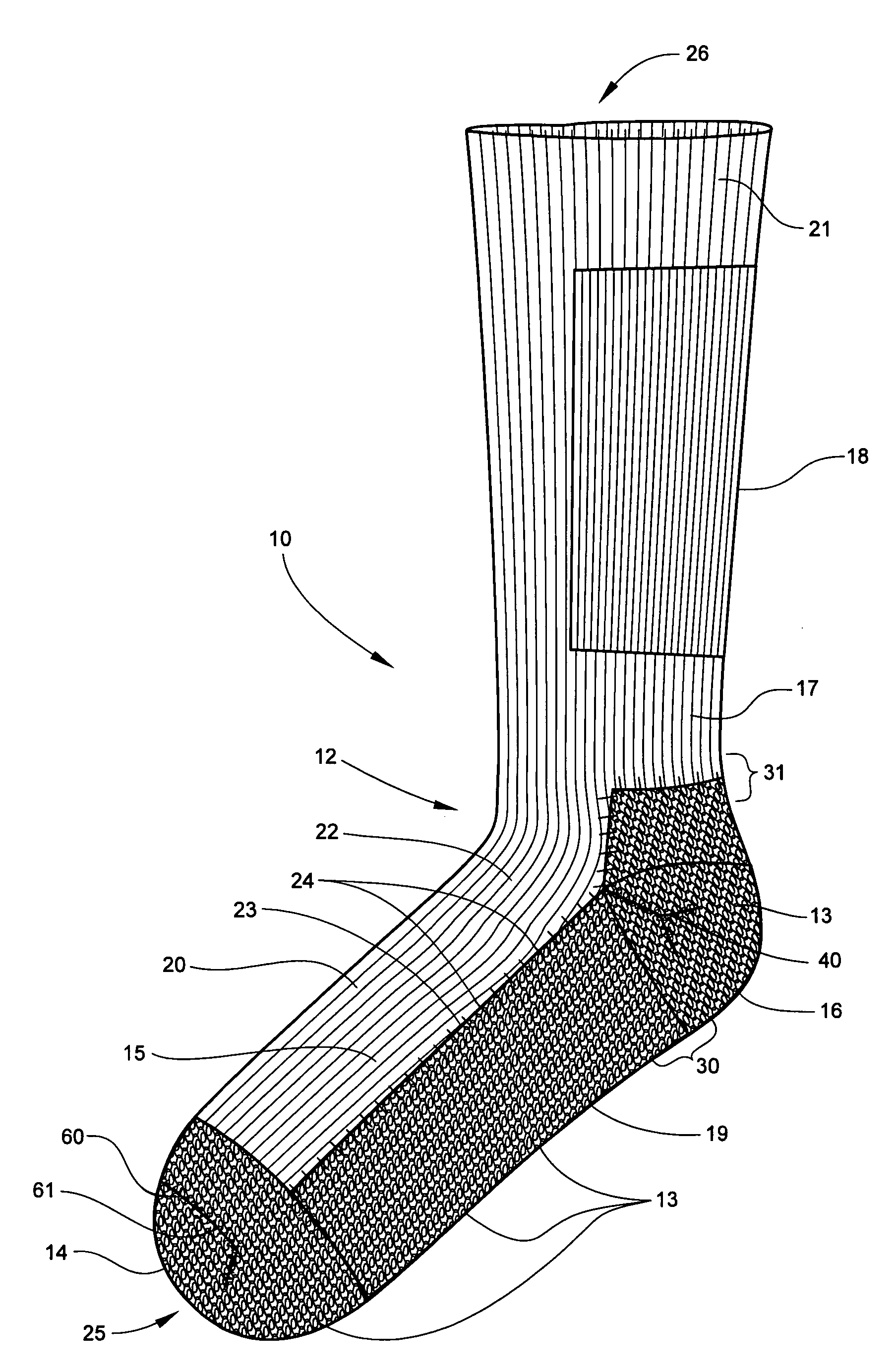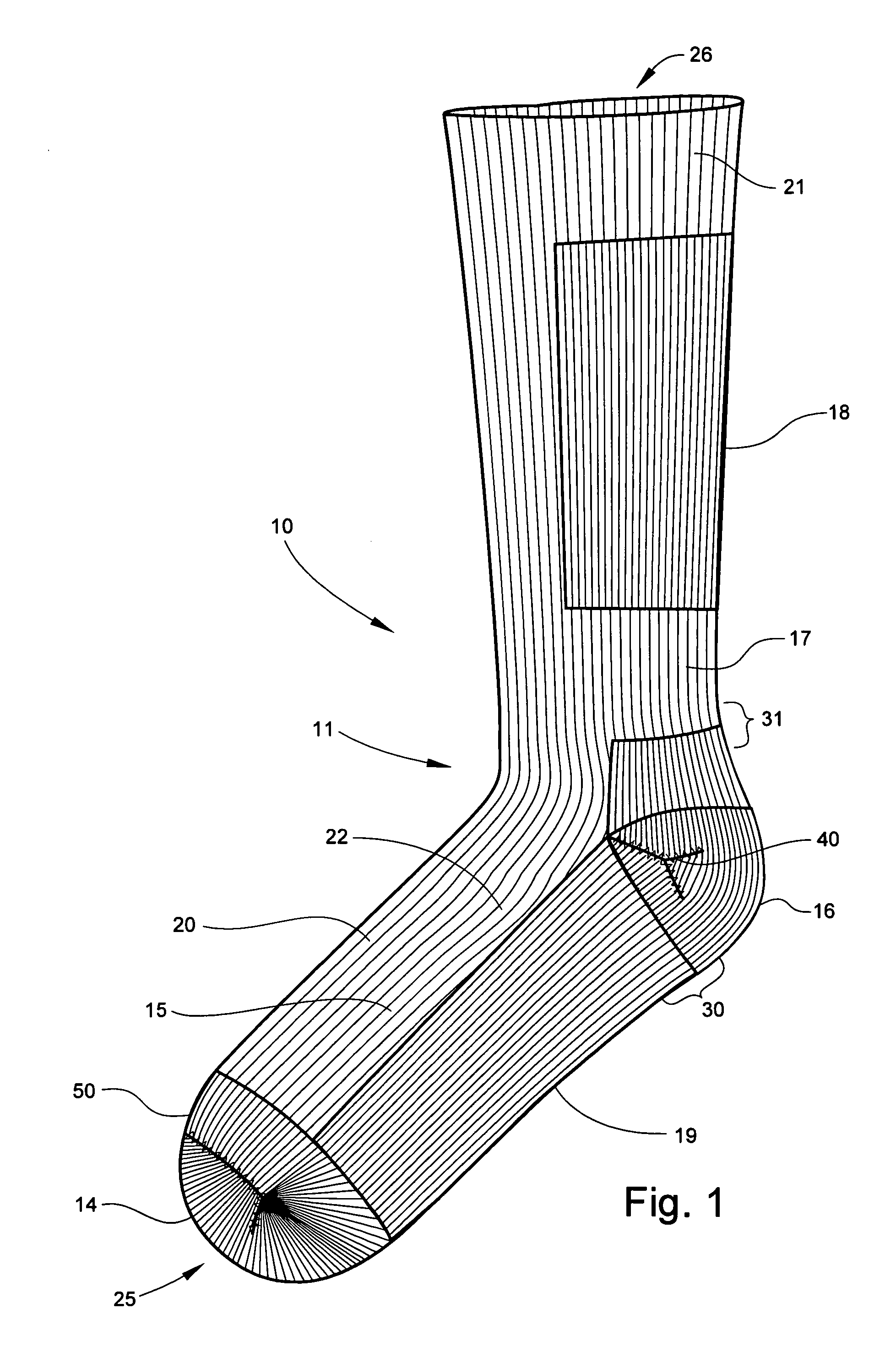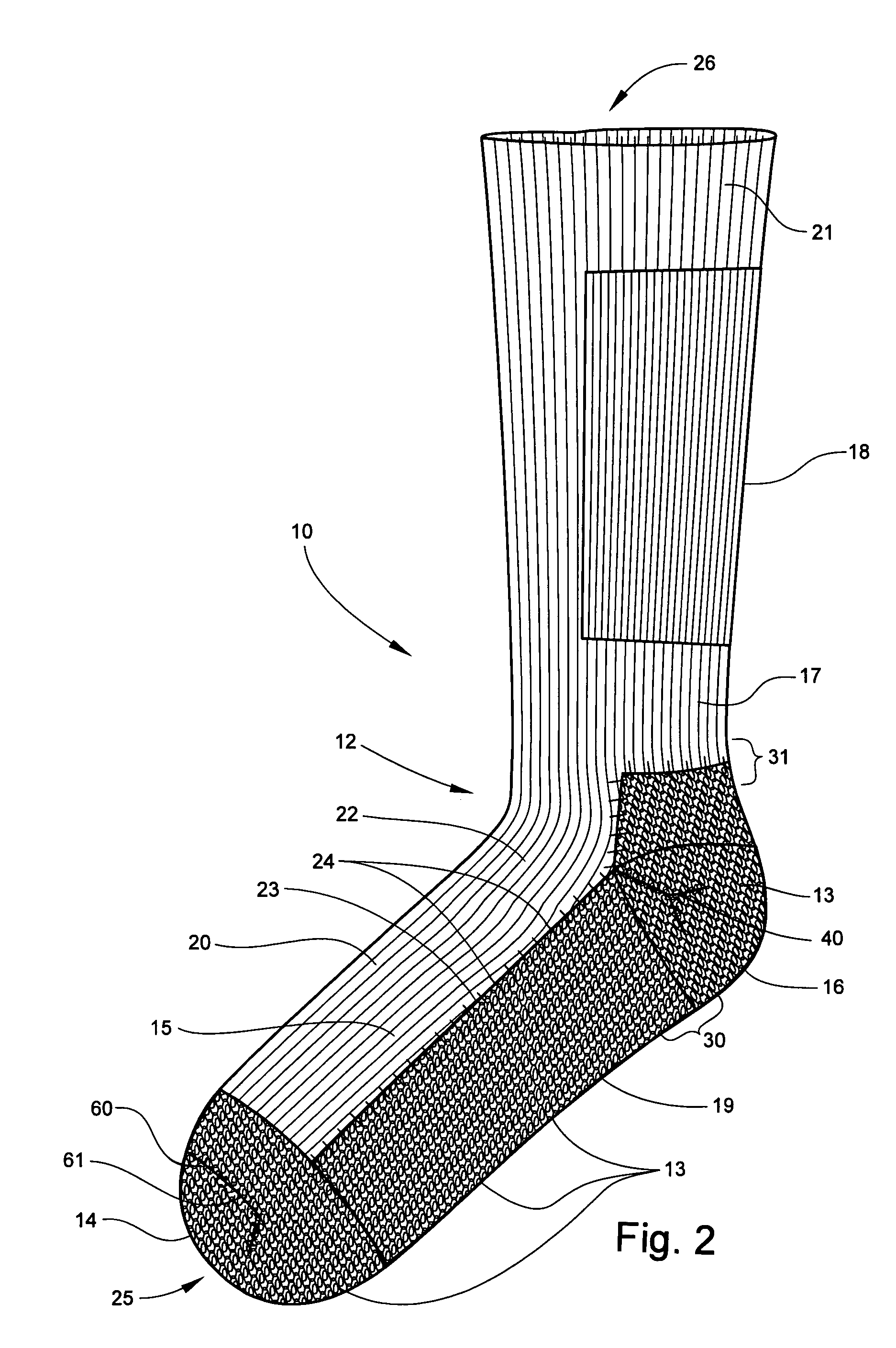Therapeutic compression and cushion sock and method of making
a compression and cushioning technology, applied in the field of therapeutic compression and cushioning socks and making methods, can solve the problems of reduced or lost feeling, venous leg ulcers and/or neuropathy, special challenges for circulatory and/or skin problems, etc., to reduce the risk of a tourniquet effect, prevent unraveling, and enhance the flow of venous.
- Summary
- Abstract
- Description
- Claims
- Application Information
AI Technical Summary
Benefits of technology
Problems solved by technology
Method used
Image
Examples
Embodiment Construction
[0025]In an embodiment of the present invention, a therapeutic compression and cushion sock can include both cushioning and zones of compressive pressure.
[0026]As shown in the embodiment in FIGS. 1 and 2, a therapeutic compression and cushion sock 10 of the present invention comprises a cushion layer 13 in selected areas of the sock 10. FIG. 1 shows the outside 11, and FIG. 2 shows the inside 12 of the sock 10. Portions that can be selected for cushioning include the toe 14, foot 15, heel 16, ankle 17, leg 18, and any combination of these portions. For example, in the embodiment shown in FIGS. 1 and 2, the sock 10 comprises cushioning 13 on the bottom portion 19 of the foot 15 and heel 16 only, thereby providing two layers of fabric in the bottom 19 of the foot portion 15 and in the heel portion 16. In such an embodiment, the top portion 20 of the foot 15 is provided without a cushioning layer 13, thus allowing greater ventilation and more rapid cooling through the top 20 of the foo...
PUM
 Login to View More
Login to View More Abstract
Description
Claims
Application Information
 Login to View More
Login to View More - R&D
- Intellectual Property
- Life Sciences
- Materials
- Tech Scout
- Unparalleled Data Quality
- Higher Quality Content
- 60% Fewer Hallucinations
Browse by: Latest US Patents, China's latest patents, Technical Efficacy Thesaurus, Application Domain, Technology Topic, Popular Technical Reports.
© 2025 PatSnap. All rights reserved.Legal|Privacy policy|Modern Slavery Act Transparency Statement|Sitemap|About US| Contact US: help@patsnap.com



